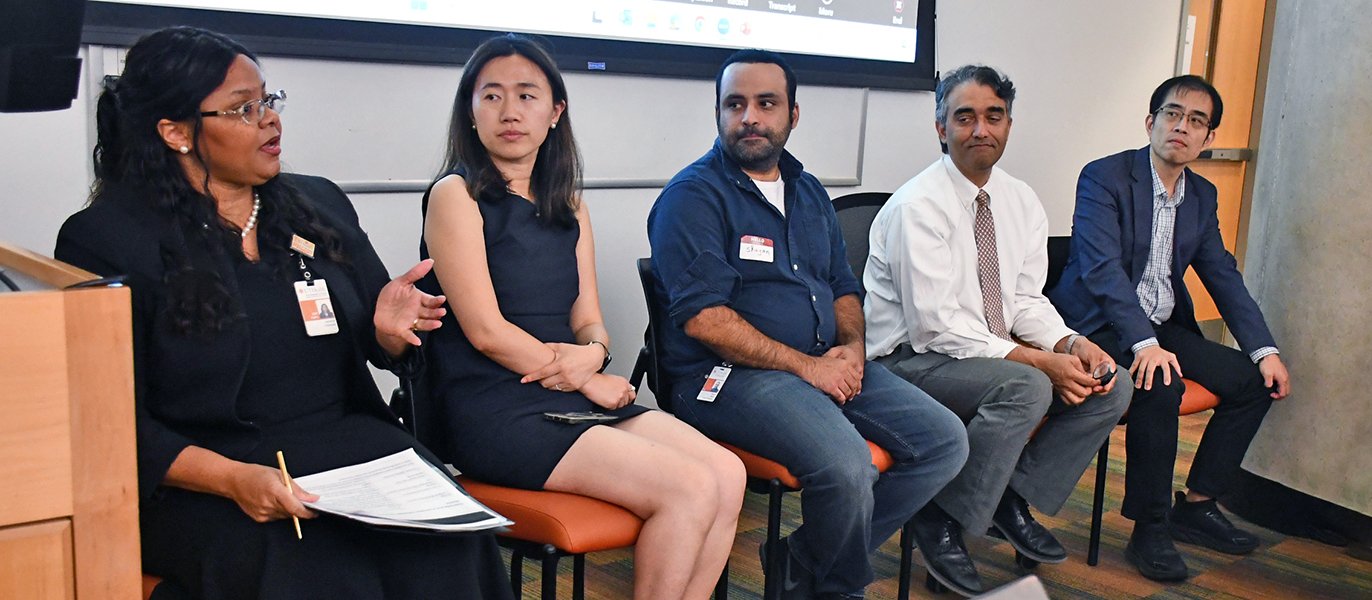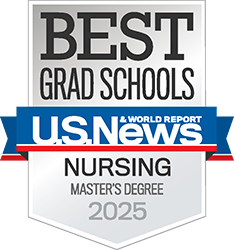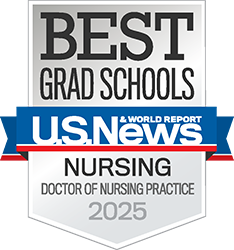Experts explore future of robotics and aging Cizik Nursing Research Institution hosts day-long event


More than 100 experts from various fields gathered in person and virtually on Oct. 23 to share ideas about the future development, ethics, and marketability of robotics in health care for older adults.
The Cizik Nursing Research Institute (CNRI) hosted “Live with Robotics as You Age” at Cizik School of Nursing at UTHealth Houston. Between lectures and panel discussions, attendees from health care organizations, universities, and private industry toured the Smart Apartment, a living laboratory designed for testing aging-in-place technology.
Attendees also had the opportunity to observe firsthand the development and application of a versatile AI-powered robotic system designed to assist older adults with daily living tasks. This initiative, supported by funding from an Aging-in-Place Research Award, aims to enhance the independence and quality of life for seniors through the use of advanced technology. The project is led by principal investigators Xiaoqian Jiang, PhD, and Carolyn Pickering, PhD, RN. Jiang, who serves as the associate vice president for medical artificial intelligence and as a professor at McWilliams School of Biomedical Informatics at UTHealth Houston, brings expertise in the intersection of AI and health care. Pickering, executive director of the CNRI and a professor at Cizik School of Nursing, contributes her experience in aging and nursing research.
The event was organized by Shayan Shams, PhD, an assistant professor at McWilliams School of Biomedical Informatics, in collaboration with Jiang and Pickering.
“I am super impressed by the resources and collaboration at UTHealth Houston and the Texas Medical Center,” said Jing Wang, PhD, RN, FAAN, an assistant professor of nursing at the University of New Hampshire (UNH) College of Health and Human Services.
Blazing trails in autonomous AI
The event kicked off with a presentation from Michael D. Abramoff, MD, PhD, the Robert C. Watzke, MD, Professor of Ophthalmology and Visual Sciences at the University of Iowa Carver College of Medicine.
A fellowship-trained retina specialist, computer engineer, and neuroscientist, Abramoff began researching machine learning with artificial neural networks in the 1980s. He is founder and executive chairman of Digital Diagnostics (IDx), which created LumineticsCore®, an autonomous AI system for diagnosing diabetic retinopathy. He developed regulatory standards and reimbursement pathways and received the first-ever Food and Drug Administration clearance for an autonomous AI diagnostic system.
The pharmaceutical industry benefits from a well-developed “escalator” for advancing new drugs from development to marketing to payer reimbursement, Abramoff noted. Such structure and resources do not yet exist for medical AI or patient-touching robotics.
“We had to start from scratch in building this industry,” he said. “With robotics, we are just at the start.”
Success depends on earning the trust and support of stakeholders, ensuring safety and effectiveness, and assuring end users of a return on investment in new technology.
“Stakeholders will all have a say, and they will all be skeptics at first,” Abramoff said. He described how inappropriately conducted clinical trials hindered the development of gene therapy research. “A bad example can set a field back for decades.”
Concerns about liability can also be an obstacle to the adoption of AI innovations, Abramoff noted. For assistive or augmented AI systems, liability lies with the end user. However, the AI creator is held responsible for any harm caused by autonomous systems. For example, the end users of LumineticsCore are not retina specialists like Abramoff, but rather diabetic practices, and the technology enables health care providers to expand their reach.
“Ultimately, it’s all about improving patient care,” he said.
The venture capital perspective
Pickering led a panel discussion with three venture capitalists who shared their thoughts on the types of emerging technology most likely to receive investor support. Participants included Peter Woodward, president of Innovative Power in Sterling, Va.; Kevin Parakkattu, a partner at the global firm Plug and Play; and Yair Abramoff, a venture capitalist with 8VC in Austin and the son of Michael Abramoff.
One common theme repeated throughout the day was that development of new technology should be driven by solving problems and fulfilling needs, not the “wow” factor of technological possibility alone. Venture capital firms seek out problems and devise solutions, then analyze the associated risks, opportunities, and barriers.
“It starts with a problem, not building a solution to a problem that doesn’t exist,” said Parakkattu, adding that he tries to clear away as many roadblocks as possible for promising technologies.
All agreed that, at least in the short term, the expense of humanoid robots makes them impractical for in-home use. Hiring home health care aids costs much less than purchasing an assistive robot, Yair Abramoff noted. More limited robotics applications, remote monitoring devices, and large-language model technologies hold more promise.
Complicated ownership structures for university-developed products can make investments less attractive to venture capitalists. Universities can be more successful at marketing and selling intellectual property than monetizing patents with multiple owners, Woodward said.
Parakkattu advocated for bringing university researchers together with private sector research and development teams in shared workspaces, such as TMC3, where some pharmaceutical companies are already adopting this approach.
Woodward advised young engineers and researchers to do their homework to effectively target venture capital firms for possible investment. Important considerations include the industries a firm funds, the development stages it typically supports, and its current investment portfolio.
The ethics of robotics in aging
At UNH, a multidisciplinary team is developing a social assistive robot called Mobile Assistive Robot with Smart Sensing (MARSS) through a project funded by the National Institute on Aging of the National Institutes of Health (NIH). Wang’s current research includes “Fostering Ethical Adoption of Artificial Intelligence-Enabled Assistive Robots (AIAR) Grounded in Person-Centered Dementia Care,” funded by the National Institute of Biomedical Imaging and Bioengineering of the NIH.
Most research on technology intended to help people living with dementia focuses on usability and technical efficacy, with ethical frameworks rarely considered, Wang said. Studies are more often based on the perspective of caregivers than those receiving care.
Ethical implementation of robotics technology balances factors such as consent, autonomy, privacy, and dignity.
“We want technology to enhance personhood and not diminish it,” Wang said, noting that many people with dementia want to be more involved in decision making.
The MARSS team recently completed pilot testing with the first patient/caregiver dyad in a home and made several discoveries. For example, the robot had trouble finding its charging port in dim lighting, and thick carpet hindered its movements. Also, prompts from the robot were sometimes interpreted as intrusions instead of helpful reminders. The group is preparing to expand testing to 40 dyads.
Aging with robotics
Activities concluded with Pickering leading a lively panel discussion on incorporating robotics into the care of aging individuals, particularly those living with dementia. Panelists were Aanand Naik, MD, executive director of the Institute on Aging at UTHealth Houston; Latarsha Cheatham, DNP, RN, FNP-BC, assistant dean for graduate studies at Cizik School of Nursing; Jiang, Wang, and Shams.
Family members often favor more intrusive interventions than patients want, and researchers must consider whether robotics technology benefits the caregiver, the older adult, or both, Pickering noted.
“The older person who is aging in place really wants that autonomy,” Cheatham said. “If you are giving them a device that will keep them in their home longer, they want to have a say in it.”
Appropriately addressing issues of consent, independence, and dignity can become a moving target as dementia progresses, Naik said. “How do you define dignity if you can’t be 100% independent or functional?” he posited.
Experienced nurses often pick up subtle cues while performing routine, repetitive tasks that robots might one day take over, like turning patients. Attendees debated whether robots could be trained to notice small things that can make a big difference in patient care.
“Human assessments are where nurses will always have a place,” Cheatham said.
Naik predicted “robot shepherd” as a future job title in the health care field. “A nurse is the right person for that job,” he said.
Learn more about the Cizik Nursing Research Institute and opportunities to conduct research in the Smart Apartment.



